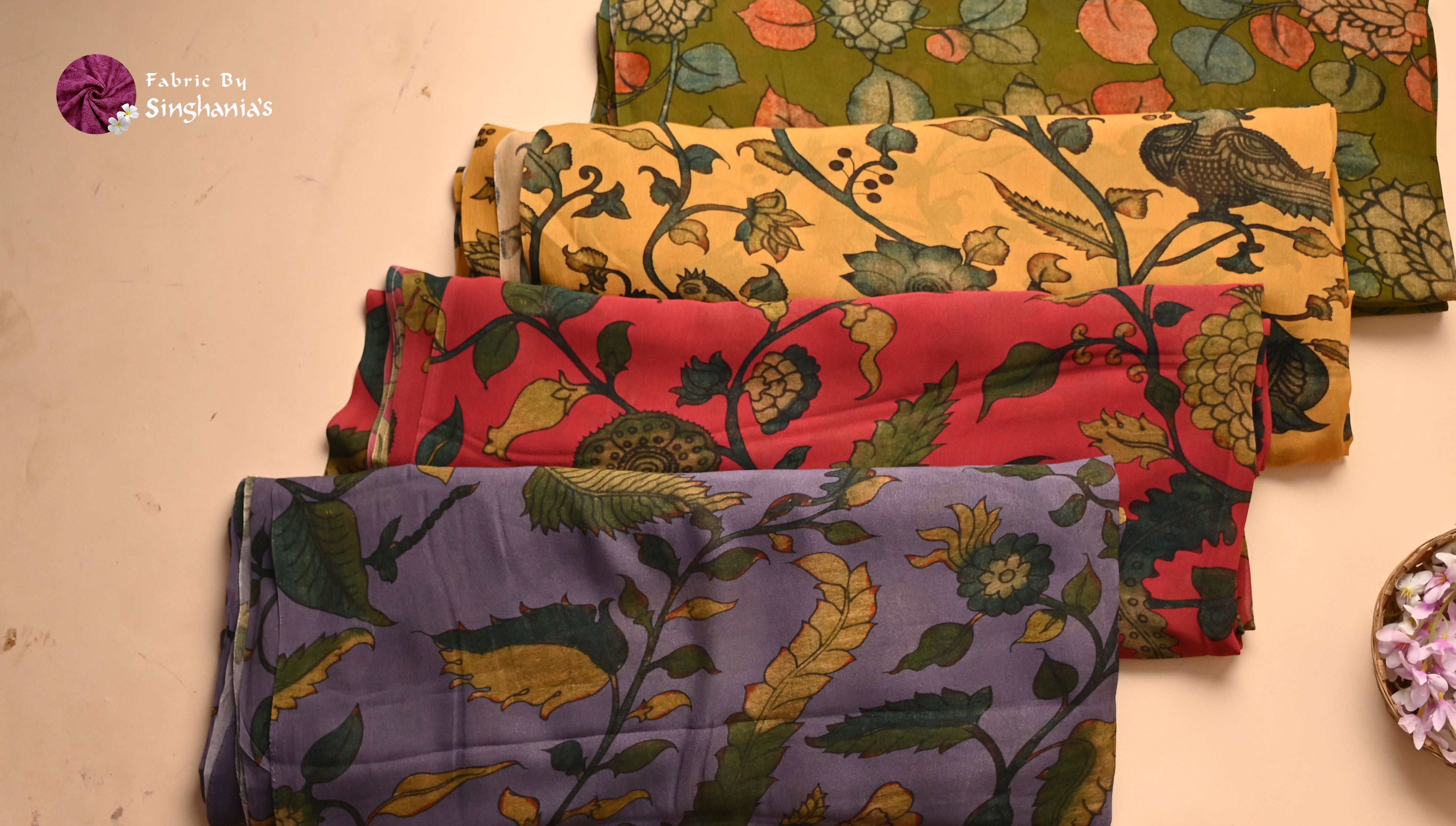
What is Bandhani Fabric?
Bandhani Fabric, also known as Bandhej, is a traditional Indian fabric renowned for its vibrant colours and intricate patterns. The name "Bandhani" comes from the Sanskrit word 'Bandh' which means 'to tie.' This is fitting, as Bandhani is a type of tie-dye fabric, an ancient art form that has been passed down through generations.
The Rich History of Bandhani Fabric
The art of Bandhani Fabric dates back thousands of years and has deep roots in Indian culture. Originating in Gujarat and Rajasthan, this craft has been a significant part of the local heritage. Historical texts and ancient paintings reveal that Bandhani was worn by royalty and used in various ceremonies, signifying prosperity and joy. The vibrant colors and intricate designs have always been a symbol of Indian festivity and tradition.
The Craft of Making Bandhani
The making of Bandhani is a meticulous process that requires skill and patience. Here’s a step-by-step look at how this beautiful fabric is created:
- Selecting the Fabric: Cotton, silk, and muslin are commonly used for Bandhani. The fabric is carefully chosen to ensure it can hold the dye well.
- Tying the Fabric: Small portions of the fabric are pinched and tied tightly with thread. The patterns created depend on how the fabric is tied. Traditional designs include dots, waves, stripes, and squares.
- Dyeing the Fabric: The tied fabric is dipped in dye, and the tied sections resist the colour, creating intricate patterns. This process can be repeated with different colors to achieve multi-colored designs.
- Untying and Finishing: Once the dyeing is complete, the fabric is untied and washed to remove excess dye and reveal the beautiful patterns.
Types of Bandhani Fabrics
Bandhani comes in various types, each with its own unique charm:
- Leheriya: Characterised by its wavy, striped patterns, often in bright colours.
- Ekdali: Features small, single dot patterns arranged in clusters.
- Shikari: Known for its motifs of animals and birds, reflecting the local wildlife.
- Mothra: Recognized by its diamond-shaped patterns, often created using two colours.
Uses of Bandhani
Bandhani fabrics are versatile and can be used for various purposes:
- Bandhani Sarees: One of the most popular uses, Bandhani sarees are cherished for their elegance and traditional appeal.
- Bandhani Dupattas: Perfect for adding a splash of colour to any outfit.
- Bandhani Turbans: In Rajasthan, Bandhani turbans are worn by men during special occasions.
- Bandhani Home Decor: Cushion covers, tablecloths, and curtains made from Bandhani fabric can add a traditional touch to your home.
Unique Facts About Bandhani
Here are some interesting facts about Bandhani that you might not know:
- Ancient Technique: The earliest evidence of Bandhani dates back to the Indus Valley Civilization, around 4000 BC.
- Symbolic Colours: Each colour in Bandhani has a special meaning. Red symbolises marriage, yellow represents spring, and saffron denotes sanctity.
- Labor-Intensive: Creating a Bandhani saree can take weeks to months, depending on the complexity of the design.
- Geographical Indication: Bandhani is recognized with a Geographical Indication (GI) tag, highlighting its unique regional origin and quality.
Why Shop Bandhani from Fabrics By Singhania’s?
When it comes to purchasing Bandhani fabrics, Singhania's stands out for several reasons:
- Authenticity: Fabric By Singhania's offers authentic Bandhani fabrics crafted by skilled artisans, ensuring that you receive the genuine product.
- Quality: The fabrics are of superior quality, made with the finest materials and dyes.
- Variety: Offered a wide range of Bandhani fabrics to choose from.
- Heritage: With a legacy of preserving and promoting Indian fabrics, Fabric By Singhania's is a name you can trust for your Bandhani needs.



